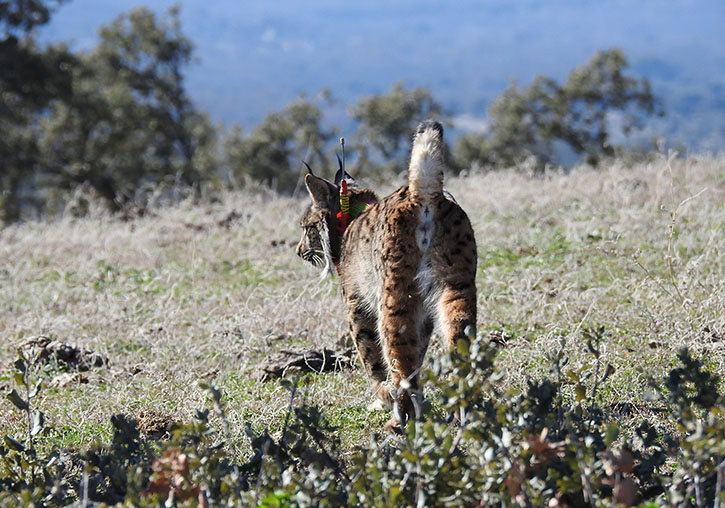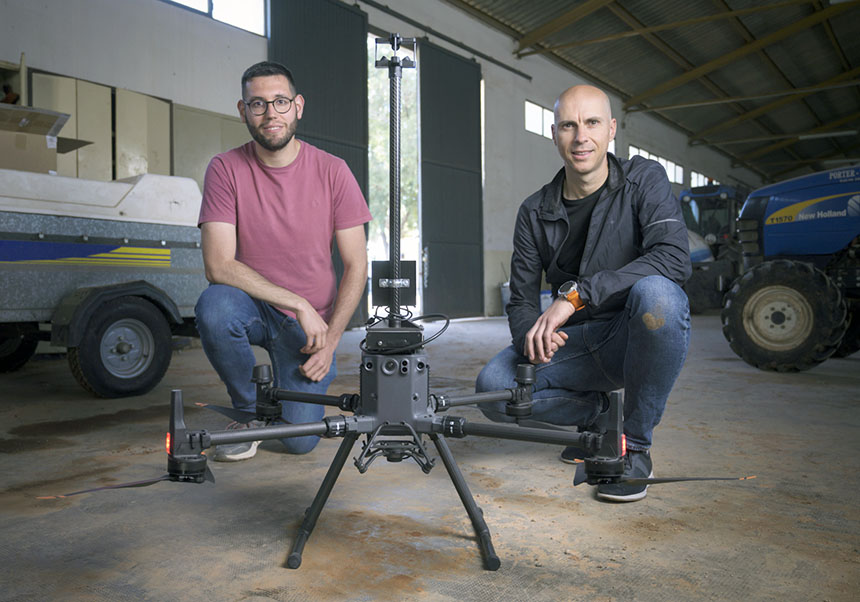Reintroducing large predators such as the Iberian lynx limits seed dispersal by other carnivores
- Science Park
- March 24th, 2022

A study published in the Journal of Animal Ecology shows that the reintroduction of super-predators into an ecosystem can lead other smaller carnivores to modify their feeding behaviour, with important repercussions on seed dispersal. Led by the Universidad Rey Juan Carlos, the study involves the Centro de Investigaciones sobre Desertificación (CIDE, UV/CSIC/GVA), the Estación Biológica de Doñana (EDB-CSIC) and the Universidad Autónoma de Madrid.
Many carnivorous mammals play a key role in ecosystem functioning as seed dispersers, consuming a large number and variety of fleshy fruits due to their generalist and opportunistic diet. However, large carnivores have been extirpated from many ecosystems worldwide as a consequence of human persecution or loss of their habitats and food resources.
Rewilding processes allow these large carnivores, such as the Iberian lynx, to recover their historical ranges. Super-predators are at the top of food chains and can produce so-called 'cascade effects', causing alterations in the abundance and behaviour of species at lower trophic levels, critically influencing the ecosystems functions and structure, known as a 'trophic cascade'.
For the research, cameras with motion detectors were used to monitor the environment from a fixed installation point. Thanks to these devices, it was possible to compare the feeding behaviour on fruits of the pyrope tree - commonly known as the 'Iberian pear tree' - a tree with fleshy fruits whose seeds are dispersed mainly by carnivorous fruit-eaters (foxes, badgers, martens...) between individuals that coexist with the Iberian lynx and those that live outside the lynx's range in the Andalusian natural park. This protected area is home to one of the largest populations of Iberian lynx in the world, and was the last refuge, along with Doñana, for the species when it was on the verge of extinction.
Lynx reduce abundance of some carnivores
The study shows that 70% and 100% of fox and marten visits, respectively, occurred in Iberian pears located outside lynx territories. Foxes and martens can be easily preyed upon by a larger competitor, and the perceived risk of predation within lynx territories could lead them to use peripheral areas more intensively to avoid conflicting encounters with lynx.
Red foxes were the carnivore that consumed the most pyrope fruits, but ingested 38% fewer fruits within lynx territories compared to other foxes in non-lynx areas. Those that coexisted with lynx were less efficient frugivores, consuming fewer fruits and making shorter visits to pyrope trees, both behaviours typically linked to an anti-predatory response. However, badgers did not appear to show sensitivity to the presence of lynx, probably due to their larger size and corpulence.
"The badger could balance the loss of seeds dispersed by foxes within lynx territories in areas where badger populations have high densities, as it is the case in some areas of Doñana, where the Iberian pear is mainly dispersed by badgers," according to Jose Fedriani, another author of this study and researcher at the Centre for Research on Desertification (CIDE, CSIC-UV-GVA).
Carnivores were not the only frugivores that consumed pyrope fruits. However, most of the other animals involved, such as deer, were very low quality seed dispersers. Therefore, the fox is the main seed disperser for the pyrethrum in the study area and the lack of this disperser could alter the demography and spatial structure of this scarce, fleshy-fruited tree. "Although we have assessed these alterations in frugivory behaviour at a local scale, we encourage reintroduction programmes to consider trophic cascades as a powerful mechanism, which can alter key ecosystem functions in different ways" concludes Tamara Burgos, researcher at the Universidad Rey Juan Carlos and lead author of the paper.
Reference:
Tamara Burgos, Jose María Fedriani, Gema Escribano-Ávila, Javier Seoane, Javier Hernández-Hernández and Emilio Virgós. Predation risk ca modify the foraging behaviour of frugivorous carnivores: implications of rewilding apex predators for plant-animal mutualisms. Journal of Animal Ecology. 2022.
More information:
File in: Ciencias de la Vida
















